Xin Q. Diesel Engine System Design
Подождите немного. Документ загружается.

620 Diesel engine system design
© Woodhead Publishing Limited, 2011
instantaneous speed reduction caused by cylinder deactivation, the vibration
and engine speed instability can become worse and the BSFC reduction can
be very little. In such a case, sometimes the BSFC can become even worse
with cylinder deactivation.
The BSFC reduction mechanisms in the deactivated cylinders are similar
or the same between the gasoline engine and the diesel engine. But the
mechanisms of pumping loss reduction in the ring cylinders are different.
In the naturally aspirated gasoline engine, the pumping loss is reduced via an
increased intake manifold pressure due to less throttling. In the turbocharged
diesel engine, the pumping loss is reduced due to the lower exhaust manifold
pressure caused by the drastically reduced engine air ow rate owing
through the given turbine area. The reduction in air ow rate is caused by
the reduced effective engine displacement as shown in equation 9.30.
Leone and Pozar (2001) found that a universal steady-state correlation of
the percentage benet of BSFC exists as a strong function of BMEP (in the
range of 0–5 bar) for different gasoline engines with cylinder deactivation.
The percentages of BSFC gains are all almost the same at the same BMEP.
They found the BSFC benet had little sensitivity to engine speed. The
average benets of fuel consumption reduction at the steady-state operation
across the speed range in the gasoline engine cylinder deactivation are
summarized below based on the reported data in the literature: 30–40%
BSFC reduction at low idle; 22% at 1 bar BMEP; 15% at 2 bar BMEP;
10% at 3 bar BMEP; 6% at 4 bar BMEP; and 0% at 5 bar BMEP. The fuel
economy improvement by cylinder deactivation in vehicle driving cycles
ranges from 6% to 15% with an average of 10%, depending on vehicle
weight, engine size, and design constraints such as NVH, gear numbers
used for deactivation, the usage of cylinder deactivation at low idle, and
the low idle time. Leone and Pozar (2001) and Sandford et al. (1998)
reported large variations in the percentage benet of BSFC for different
vehicle applications and driving cycles. The fuel economy benet varies
signicantly between different test cycles, especially between the city and
highway driving cycles. City driving usually has a greater BSFC benet
than highway driving. If the driving cycle has a large proportion of part-
load operating conditions, the BSFC benet of cylinder deactivation will
become more prominent.
Emissions and exhaust temperature in cylinder deactivation
The cylinder deactivation in the gasoline engine tends to increase brake
specic NO
x
and reduce HC and CO emissions. HC spikes exist at the
transition from the deactivation to the activation modes. Very little data
exist in the published literature about the emissions in diesel engine cylinder
deactivation. The BMEP level in cylinder deactivation in the diesel engine
Diesel-Xin-09.indd 620 5/5/11 11:59:14 AM
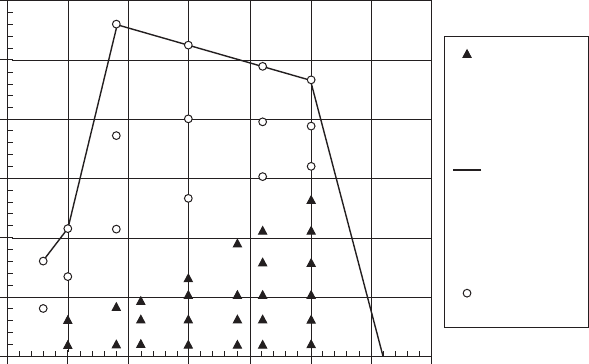
621Advanced diesel valvetrain system design
© Woodhead Publishing Limited, 2011
is primarily limited by soot emissions when the air–fuel ratio becomes low
in the ring cylinders.
Another major benet of cylinder deactivation by VVA is the great
increase in the exhaust gas temperature for aftertreatment operation at light
loads, low idle and warm-up without signicant BSFC penalty. Cylinder
deactivation is very effective in increasing the exhaust temperature to improve
the light-off time for the catalysts such as SCR during warm-up. Although
cylinder deactivation itself is usually not sufcient to quickly light off most
aftertreatment systems, a combined means with early or late IVC timing and
retarded fuel injection timing can be used to further increase the exhaust
temperature.
9.9.3 Diesel cylinder deactivation performance
simulation
The benet of cylinder deactivation in turbocharged diesel engines has not
been published to date. Figures 9.23–9.29 present a comprehensive simulation
analysis of cylinder deactivation for a V8 heavy-duty diesel engine with high
power density. There are fourteen scenarios (S1–S14) representing different
conditions in engine load, xed geometry turbine area, wastegate opening,
valve deactivation and shut-off timing strategies, as listed in Table 9.2. In
the analysis, both the BMEP and PMEP are dened for the entire engine,
6.4L V8 engine, 500 hp rated power at 3000
rpm, 1050 ft.lb at 1400 rpm
Engine BMEP (bar)
30
25
20
15
10
5
0
500 1000 1500 2000 2500 3000 3500 4000
Engine speed (rpm)
Part load
(cylinder
deactivation
simulation
region)
Full load lug
curve
High load
region
9.23 Engine speed–load domain in cylinder deactivation analysis.
Diesel-Xin-09.indd 621 5/5/11 11:59:14 AM
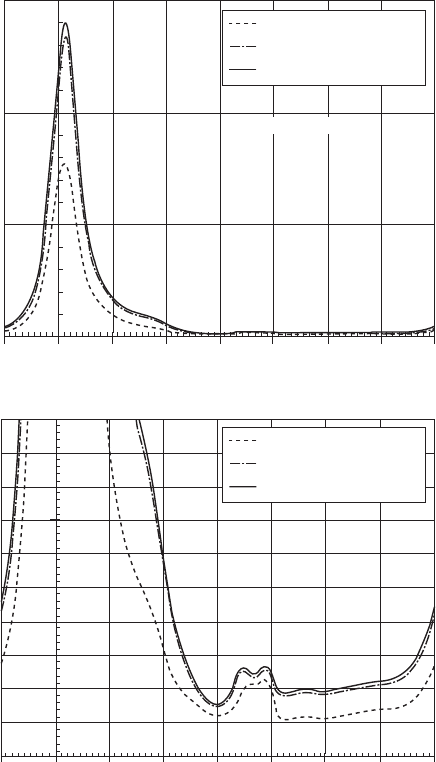
622 Diesel engine system design
© Woodhead Publishing Limited, 2011
S1, 2400 rpm 360 ft.lb
S7, 2400 rpm 360 ft.lb
S8, 2400 rpm 360 ft.lb
S1, 2400 rpm 360 ft.lb
S7, 2400 rpm 360 ft.lb
S8, 2400 rpm 360 ft.lb
BMEP = 9.6 bar
–90 0 90 180 270 360 450 540 630
Crank angle (degree)
–90 0 90 180 270 360 450 540 630
Crank angle (degree)
(a) Firing cylinder (cylinder 1)
Cylinder 1 pressure (bar, absolute)Cylinder 1 pressure (bar, absolute)
150
100
50
0
10
9
8
7
6
5
4
3
2
1
0
9.24 Effect of cylinder deactivation valving strategy on cylinder
pressure.
i.e., dened as the work per cycle divided by the total engine displacement.
In the simulation, four cylinders are deactivated (i.e., the V4 operation).
A two-stage xed geometry turbine system is used in the simulation, and
there is a wastegate valve in the high-pressure (HP) stage turbine. EGR
is assumed to be zero when the xed-geometry turbine area is selected to
Diesel-Xin-09.indd 622 5/5/11 11:59:14 AM
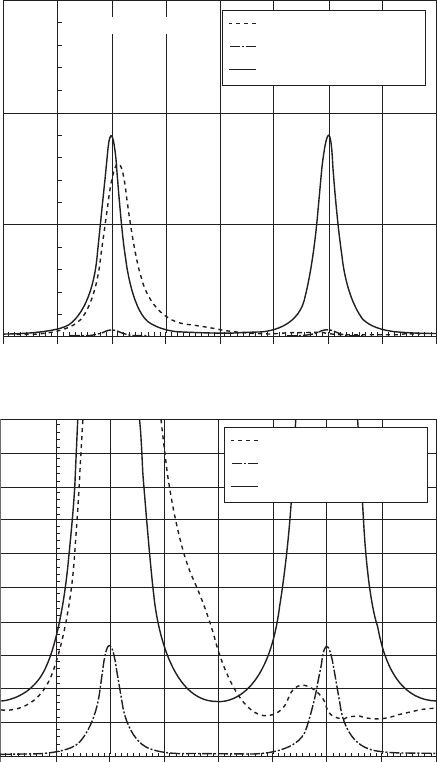
623Advanced diesel valvetrain system design
© Woodhead Publishing Limited, 2011
deliver sufcient air–fuel ratio for both peak torque and rated power in the
V8 operation. If a certain amount of EGR is needed to reduce NO
x
, a smaller
turbine can be selected to deliver sufcient air–fuel ratio at both full load
and part load at the given required EGR rate with a resulting higher engine
delta P and BSFC than the zero-EGR case. Therefore, with an appropriate
turbine area matched with an assumed EGR rate, the cylinder deactivation
analysis conducted here is directionally valid for other EGR rates.
S1, 2400 rpm 360 ft.lb
S7, 2400 rpm 360 ft.lb
S8, 2400 rpm 360 ft.lb
S1, 2400 rpm 360 ft.lb
S7, 2400 rpm 360 ft.lb
S8, 2400 rpm 360 ft.lb
BMEP = 9.6 bar
–90 0 90 180 270 360 450 540 630
Crank angle (degree)
–90 0 90 180 270 360 450 540 630
Crank angle (degree)
(b) Deactivation cylinder (cylinder 2)
Cylinder 2 pressure (bar, absolute)
Cylinder 2 pressure (bar, absolute)
150
100
50
0
10
9
8
7
6
5
4
3
2
1
0
9.24 Continued
Diesel-Xin-09.indd 623 5/5/11 11:59:14 AM
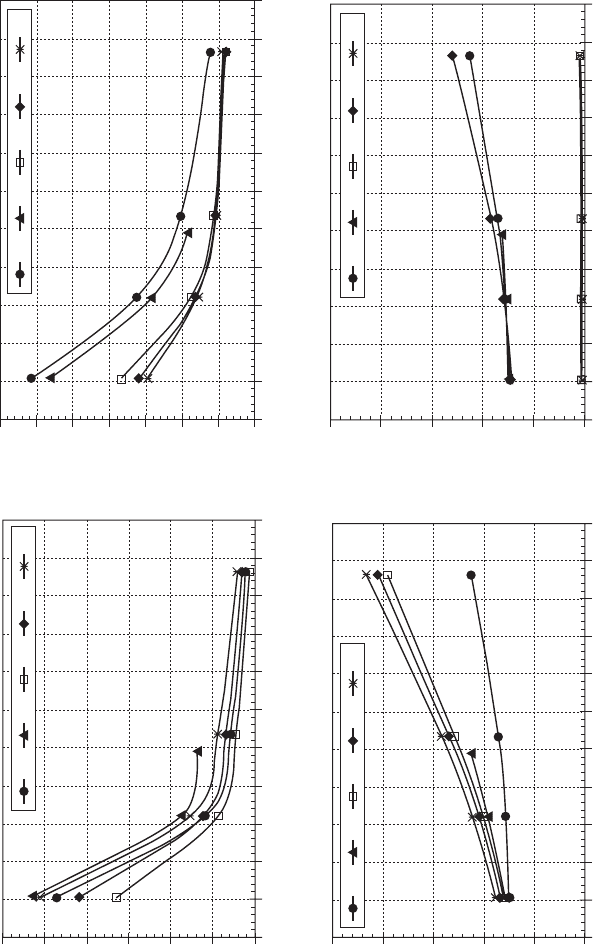
© Woodhead Publishing Limited, 2011
Simulation of cylinder deactivation at part load and 2400 rpm
Simulation of cylinder deactivation at part load and 2400 rpm
Simulation of cylinder deactivation at part load and 2400 rpm
Simulation of cylinder deactivation at part load and 2400 rpm
0 1 2 3 4 5 6 7 8 9 10 11
BMEP (bar)
0 1 2 3 4 5 6 7 8 9 10 11
BMEP (bar)
0 1 2 3 4 5 6 7 8 9 10 11
BMEP (bar)
0 1 2 3 4 5 6 7 8 9 10 11
BMEP (bar)
S1 S6 S7 S8 S9
S1 S6 S7 S8 S9 S1 S6 S7 S8 S9
S1 S6 S7 S8 S9
BSFC (lb/(hp.hr))
Peak cylinder gas pressure (psia,
maximum of all cylinders)
Peak cylinder gas pressure of
cylinder 2 (psia)
Engine A/F ratio
0.95
0.85
0.75
0.65
0.55
0.45
0.35
2500
2000
1500
1000
500
0
2500
2000
1500
1000
500
0
80
70
60
50
40
30
20
10
9.25 Investigation of cylinder deactivation strategies.
Diesel-Xin-09.indd 624 5/5/11 11:59:15 AM

© Woodhead Publishing Limited, 2011
Simulation of cylinder deactivation at part load and 2400 rpm
Simulation of cylinder deactivation at part load and 2400 rpm
Simulation of cylinder deactivation at part load and 2400 rpm
Simulation of cylinder deactivation at part load and 2400 rpm
0 1 2 3 4 5 6 7 8 9 10 11
0 1 2 3 4 5 6 7 8 9 10 11
BMEP (bar)
0 1 2 3 4 5 6 7 8 9 10 11
0 1 2 3 4 5 6 7 8 9 10 11
BMEP (bar)
S1 S6 S7 S8 S9
S1 S6 S7 S8 S9 S1 S6 S7 S8 S9
S1 S6 S7 S8 S9
BMEP (bar) BMEP (bar)
Engine delta P (back minus
boost, mbar)
Gross pumping loss PMEP (bar)
Peak cylinder gas temperature
of cylinder 1 (°F)
Exhaust manifold gas temperature
(°F)
400
300
200
100
0
–100
–200
0
–0.5
–1
–1.5
4000
3500
3000
2500
2000
1500
1000
1400
1300
1200
1100
1000
900
800
700
600
500
400
9.25 Continued
Diesel-Xin-09.indd 625 5/5/11 11:59:15 AM
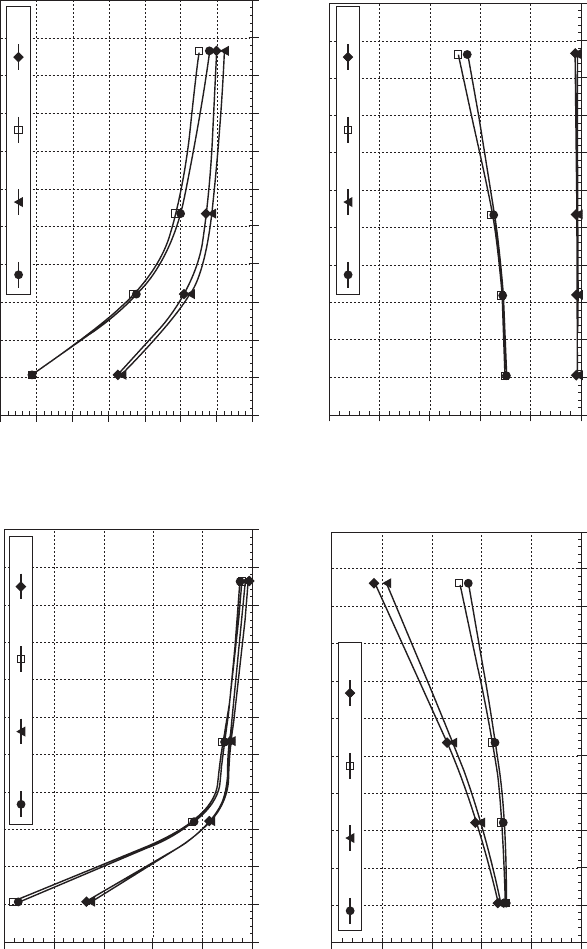
© Woodhead Publishing Limited, 2011
Simulation of cylinder deactivation at part load and 2400 rpm
Simulation of cylinder deactivation at part load and 2400 rpm
Simulation of cylinder deactivation at part load and 2400 rpm
Simulation of cylinder deactivation at part load and 2400 rpm
0 1 2 3 4 5 6 7 8 9 10 11
BMEP (bar)
0 1 2 3 4 5 6 7 8 9 10 11
BMEP (bar)
0 1 2 3 4 5 6 7 8 9 10 11
BMEP (bar)
0 1 2 3 4 5 6 7 8 9 10 11
BMEP (bar)
S1 S7 S11 S13
S1 S7 S11 S13
S1 S7 S11 S13
S1 S7 S11 S13
BSFC (lb/(hp.hr))
Peak cylinder gas pressure (psia,
maximum of all cylinders)
Peak cylinder gas pressure of
cylinder 2 (psia)
Engine A/F ratio
0.85
0.75
0.65
0.55
0.45
0.35
2500
2000
1500
1000
500
0
2500
2000
1500
1000
500
0
80
70
60
50
40
30
20
10
9.26 Effect of turbine area on cylinder deactivation.
Diesel-Xin-09.indd 626 5/5/11 11:59:15 AM
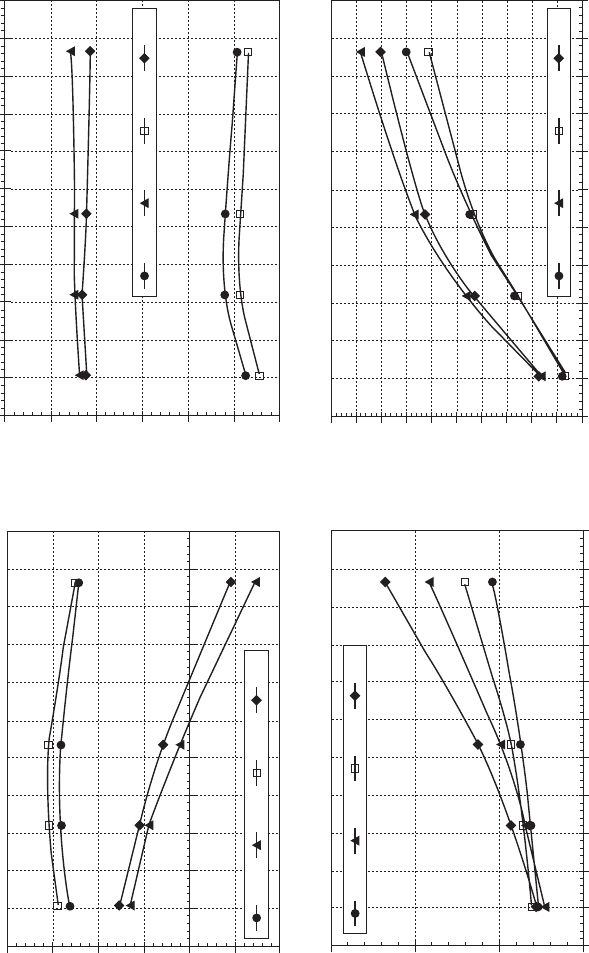
© Woodhead Publishing Limited, 2011
S1 S7 S11 S13
S1 S7 S11 S13
S1 S7 S11 S13
S1 S7 S11 S13
Simulation of cylinder deactivation at part load and 2400 rpm
Simulation of cylinder deactivation at part load and 2400 rpm
Simulation of cylinder deactivation at part load and 2400 rpm
Simulation of cylinder deactivation at part load and 2400 rpm
0 1 2 3 4 5 6 7 8 9 10 11
0 1 2 3 4 5 6 7 8 9 10 11
BMEP (bar)
0 1 2 3 4 5 6 7 8 9 10 11
0 1 2 3 4 5 6 7 8 9 10 11
BMEP (bar)
BMEP (bar)
BMEP (bar)
Engine delta P (back minus
boost, mbar)
Gross pumping loss PMEP (bar)
Exhaust manifold back pressure
(bar, absolute)
Exhaust manifold gas temperature
(°F)
400
300
200
100
0
–100
–200
0
–0.1
–0.2
–0.3
–0.4
–0.5
–0.6
2.5
2
1.5
1
1400
1300
1200
1100
1000
900
800
700
600
500
400
9.26 Continued
Diesel-Xin-09.indd 627 5/5/11 11:59:16 AM
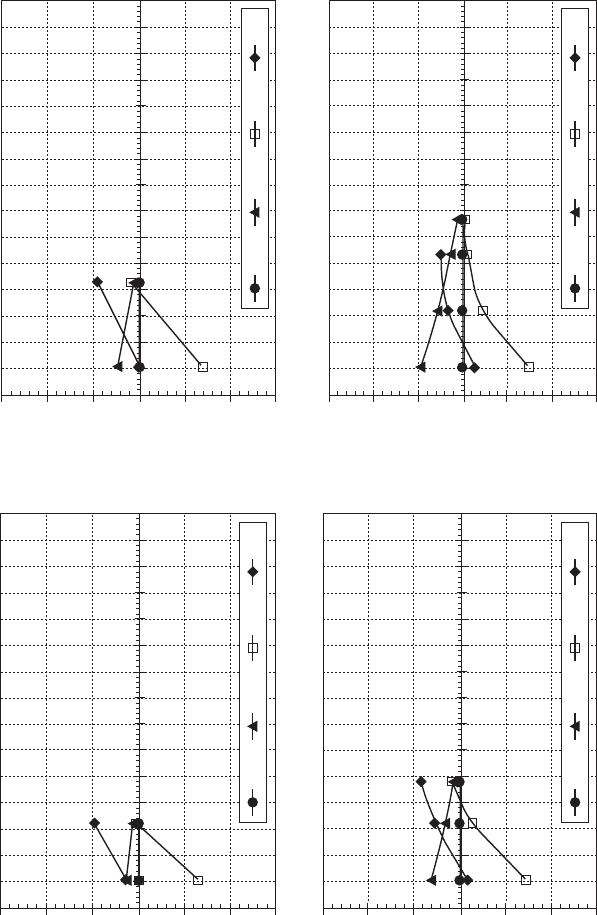
© Woodhead Publishing Limited, 2011
Simulation of cylinder deactivation at part load and 1000 rpm
Simulation of cylinder deactivation at part load and 1600 rpm
Simulation of cylinder deactivation at part load and 1400 rpm
Simulation of cylinder deactivation at part load and 2000 rpm
0 1 2 3 4 5 6 7 8 9 10 11 12 13 14 15
0 1 2 3 4 5 6 7 8 9 10 11 12 13 14 15
0 1 2 3 4 5 6 7 8 9 10 11 12 13 14 15
0 1 2 3 4 5 6 7 8 9 10 11 12 13 14 15
BMEP (bar)
BMEP (bar)
BMEP (bar)
BMEP (bar)
S1 S3 S7 S8
S1 S3 S7 S8
S1 S3 S7 S8
S1 S3 S7 S8
BSFC change relative to the
BSFC of S1
BSFC change relative to the
BSFC of S1
BSFC change relative to the
BSFC of S1
BSFC change relative to the
BSFC of S1
30%
20%
10%
0%
–10%
–20%
–30%
30%
20%
10%
0%
–10%
–20%
–30%
30%
20%
10%
0%
–10%
–20%
–30%
30%
20%
10%
0%
–10%
–20%
–30%
9.27 BSFC of cylinder deactivation at different engine speeds and loads.
Diesel-Xin-09.indd 628 5/5/11 11:59:16 AM
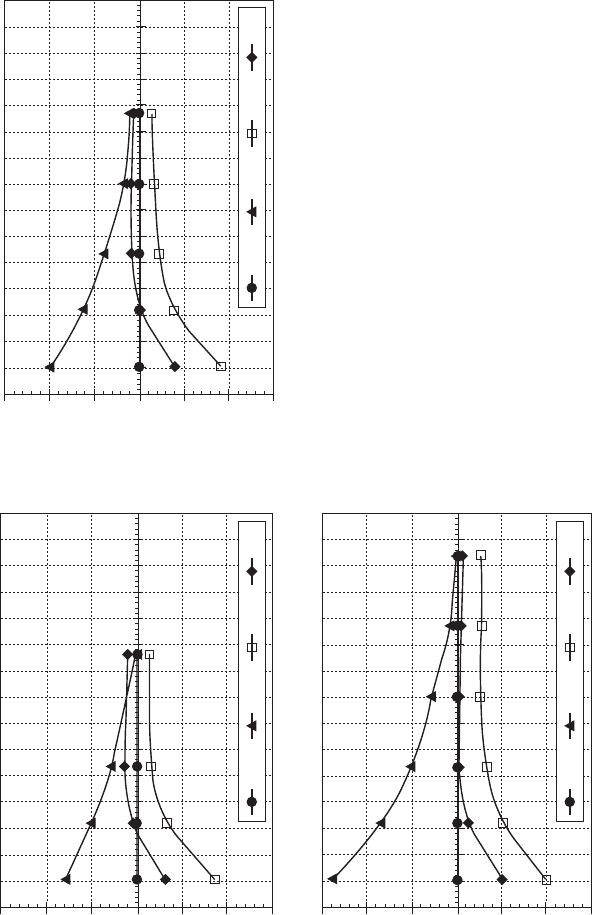
© Woodhead Publishing Limited, 2011
Simulation of cylinder deactivation at part load and 2400 rpm
Simulation of cylinder deactivation at part load and 3000 rpm
Simulation of cylinder deactivation at part load and 2600 rpm
0 1 2 3 4 5 6 7 8 9 10 11 12 13 14 15
0 1 2 3 4 5 6 7 8 9 10 11 12 13 14 15
0 1 2 3 4 5 6 7 8 9 10 11 12 13 14 15
BMEP (bar)
BMEP (bar)
BMEP (bar)
S1 S3 S7 S8
S1 S3 S7 S8
S1 S3 S7 S8
BSFC change relative to the
BSFC of S1
BSFC change relative to the
BSFC of S1
BSFC change relative to the
BSFC of S1
30%
20%
10%
0%
–10%
–20%
–30%
30%
20%
10%
0%
–10%
–20%
–30%
30%
20%
10%
0%
–10%
–20%
–30%
9.27 Continued
Diesel-Xin-09.indd 629 5/5/11 11:59:16 AM
